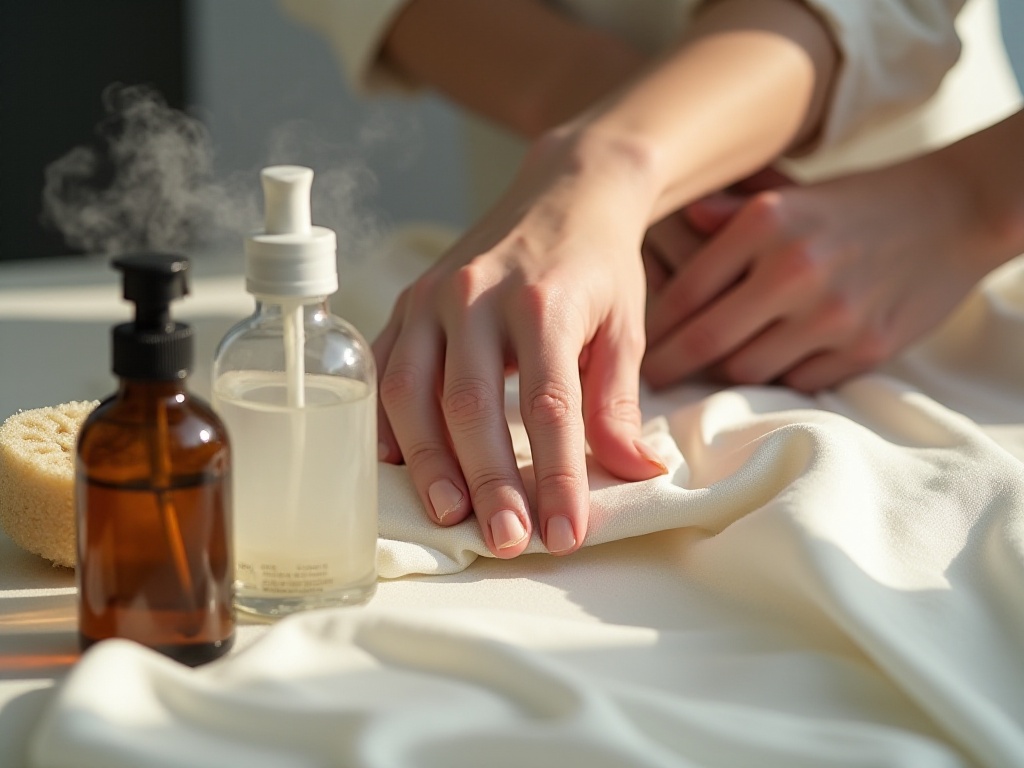Opening Words
As a newly employed worker, it always hurts to see the clothes I worked hard to buy quickly become unwearable. New white T-shirts turn yellow after just a few wears, favorite jeans fade with washing, and sweaters pill up like little hedgehogs - it's frustrating to look at. Every time I go shopping and see clothes I like, I want to buy them, but then I hesitate thinking they might quickly become unwearable. However, I later discovered that clothes can last a very long time if you master the right care methods. As a seasoned blogger who has researched clothing care for 10 years, I've compiled my experiences and insights into this article, hoping to help everyone solve their clothing care troubles.
Basic Classification
Many young people think washing clothes is simple - just throw everything in the washing machine and press a button. But this approach is very wrong and can easily lead to color bleeding and fabric damage. The correct way is to sort strictly. I specifically bought two laundry baskets at home, one for light-colored clothes and another for dark colors. When doing laundry, it's clear which items can be washed together and which cannot.
Besides color sorting, fabric classification is also important. Cotton, synthetic fibers, wool, and silk all have different washing requirements. For example, synthetic athletic wear should be washed separately as they can generate static electricity and attract lint from other clothes. Delicate fabrics like wool and silk need special care.
Temperature is also an important sorting criterion. Some clothes need warm water to remove stains, while others can only be washed in cold water as warm water can cause deformation or damage. Therefore, always check the care label before washing and follow the recommended temperature.
Washing Tips
Speaking of care labels, these are truly the "bible" of clothing care. Though those small symbols look complicated, each has a specific meaning. Water temperature, bleaching, dry cleaning, ironing - all have corresponding symbols. I've seen too many cases of clothes ruined because people didn't check the labels.
Just the other day, a reader asked for help because her new cashmere sweater shrunk so small after washing that it would only fit a Barbie doll. When asked, it turned out the label clearly said "dry clean only," but she had thrown it in the washing machine on regular cycle. With such delicate fabrics, using the wrong washing method is irreversible.
Jeans care is a concern for many people. Many have the misconception that jeans need washing after every wear. This actually accelerates aging and fading. Unless there are obvious stains or odors, jeans can be worn multiple times before washing. When washing, remember several points: First, turn jeans inside out to reduce surface wear and fading; Second, don't use hot water, cold or warm water is better; Third, don't use the dryer, air dry naturally instead.
When it comes to washing, choosing suitable detergent is also important. There are many types of detergents on the market - regular, professional, natural, etc. Different clothes should use corresponding professional detergents. For example, athletic wear should use specialized sports detergent to better remove sweat and odors; wool sweaters should use wool-specific detergent to protect wool fibers from damage.
Also pay attention to the ratio of water to clothes when washing. Many people like to wash lots of clothes at once, thinking it saves time and utilities. But overfilling actually affects cleaning effectiveness and can cause wear. The correct approach is to adjust water level according to the amount of clothes, allowing them to move freely in water.

Daily Maintenance

Storage Methods
Many people think they're done once clothes are clean, but storage methods are also important for clothing care. I've seen many young people's closets that are "painful to look at": clothes just stuffed in carelessly, resulting in terrible wrinkles and potential odors.
Proper storage starts with choosing suitable hangers. Different clothes need different types of hangers. Suits and coats that are heavier should use wooden hangers to maintain their shape. Knitwear and sweaters that easily deform should be laid flat rather than hung.
Closet organization is also important. I suggest organizing by season and type. Keep current season clothes easily accessible and store off-season items away. This makes retrieval convenient and prevents moisture damage or mold.
When storing clothes, make sure they are completely dry. Damp clothes placed directly in closets can easily develop odors or mold, especially during rainy seasons.

Odor Removal Tips
Speaking of odors, this troubles many people. Sometimes clothes aren't visibly dirty but have unpleasant smells like sweat or cooking oil. In these cases, you don't need to rush to wash them - there are many simple deodorizing methods.
The simplest method is hanging clothes in a ventilated area. This works especially well in spring and autumn - most odors dissipate after an hour in natural wind. If weather isn't suitable, hanging clothes in the bathroom with the fan on works well too.
Besides natural airing, you can use natural deodorizers. White vinegar is a good choice - spray diluted vinegar on clothes and odors disappear once dry. Lemon slices also work well for deodorizing and can be placed in closets to repel insects.
For athletic wear odors, add baking soda when washing. Baking soda not only removes odors but enhances cleaning. Just be careful with the amount - too much can affect fibers.

Special Care
Stain Removal Techniques
Stain treatment is perhaps the most headache-inducing aspect of clothing care. Different stains need different treatment methods, and timing is crucial. Generally, the sooner stains are treated the better, ideally before they set.
I had an especially embarrassing experience: once during an important business meeting, I accidentally spilled coffee on my white shirt. Fortunately, I had a stain removal pen with me and treated it immediately. First blotting excess coffee with tissue, then gently applying the pen. Once the shirt dried, the stain was almost invisible. Since then, I've made it a habit to carry a stain removal pen.
Different types of stains require different treatment methods. For oil stains, first use oil-absorbing paper to remove surface oil, then treat with professional oil stain remover. For wine stains, sprinkle salt to absorb it, then use professional stain remover. Lipstick marks can be treated with makeup remover before normal washing.
Particularly note: don't rub stains vigorously as this can make them penetrate deeper. The correct method is to gently pat or wipe from the outside toward the center.
Delicate Fabrics
Caring for delicate fabrics is truly technical. Different fabrics have different characteristics requiring different care methods.
Silk is one of the most delicate fabrics. When washing silk items, water temperature must stay below 30 degrees Celsius, and specialized silk detergent is best. Wash gently by hand without wringing. Hang dry away from direct sunlight.
Wool items also need special attention. Wool can't handle high temperatures, so use cool water. Don't use regular detergent - use wool-specific detergent. Don't wring dry - gently absorb water with towels then lay flat to dry.
Leather goods require even more specific care. Leather clothing and bags need regular conditioning with leather care oil to prevent cracking. If they get wet, immediately absorb water with a dry towel and air dry naturally - never use hot air.
Lace, sequins and other decorative fabrics need extra care too. Hand wash with specialized neutral detergent. Avoid direct sunlight when drying to prevent fading or damage.
Practical Advice
For clothing care, prevention is much more important than treatment. Good care habits can greatly extend clothing lifespan.
After wearing clothes, I habitually check for stains. If found, treat immediately rather than waiting until the next wash. The longer stains set, the harder they are to remove.
Don't just toss off worn clothes - organize them before storing. For suits or coats, gently brush to remove surface dust and lint.
Regular closet checks are important too. When changing seasonal clothes, check for mold, moth damage, etc. Address problems promptly before they worsen.
Also pay attention when buying clothes. Choose based on your care capabilities. If you're usually busy with limited time for clothing care, avoid items needing special care. Choose easy-care fabrics to save time and energy.

Final Words
Clothing care is really about developing habits. It might seem troublesome at first, but with persistence, you'll find these small habits not only make clothes last longer but make life more refined.
Everyone has their own clothing care tricks learned through experience. I hope sharing through this article helps everyone better care for their clothes. Welcome to share your own clothing care experiences in the comments - let's be practitioners of refined living together.
Do you have clothes in your closet that still look new after long wear? They must have their own unique care methods. Let's share and improve together, helping every piece of clothing accompany us further.
Related articles




